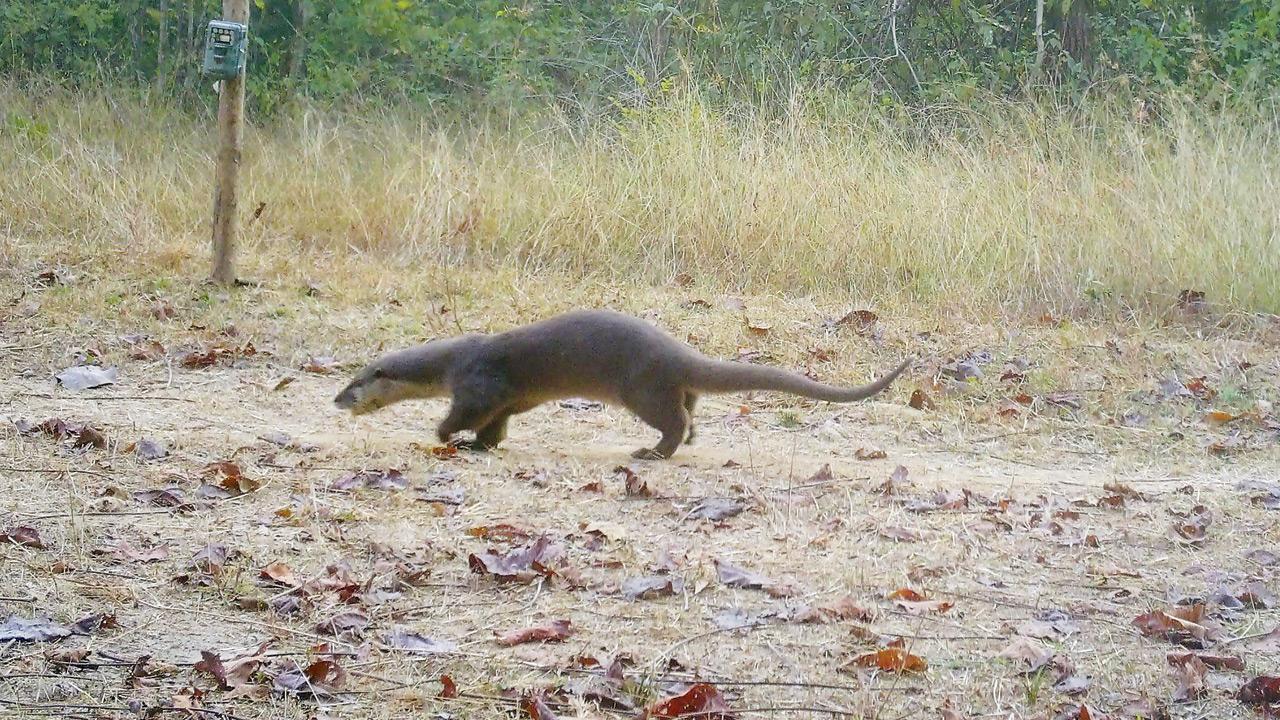The animal was last reported in 1978 in southern areas of Gondia district; India is home to three otter species

The Eurasian otter. Pic/Maharashtra Forest Department/NNTR
The camera traps installed at the Navegaon-Nagzira Tiger Reserve (NNTR)—located 850 km northeast of Mumbai—recorded the first-ever photographic evidence of a Eurasian otter (Lutra lutra) within its landscape. NNTR is spread across Gondia and Bhandara districts, bordering Chhattisgarh. The reserve falls under the Tropical Dry Deciduous Forest (5A/C3) category, as per Champion and Seth’s classification of Indian forests.
Speaking to mid-day Jayarame Gowda R, field director, NNTR, said, “NNTR has recorded the first-ever photographic evidence of the Eurasian otter within its landscape. This significant discovery was made during the extensive Phase IV monitoring for 2024-2025, conducted through camera trap surveys across the reserve. The monitoring covered an expansive area of around 1894.90 km², including both the core and buffer zones of NNTR, which spans across Gondia and Bhandara districts in Maharashtra.”
Otters play a crucial role in maintaining freshwater and riparian ecosystems by serving as indicators of a healthy semi-aquatic environment. The Eurasian otter was identified in the Koka range of NNTR during the species-level occupancy analysis of the Phase-IV data led by Wildlife Biologist (NNTR) Ankit Thakur, under the guidance of Jayarame Gowda R and Pawan Jeph, deputy director, NNTR.
It may be noted that Maruti Chitampalli, a legendary naturalist, writer, and forest officer, last reported the species in 1978 in the southern areas of present-day Gondia district. However, this is the first-ever photographic confirmation of its presence in NNTR.
“This discovery brings immense joy to the NNTR administration and nature enthusiasts, reaffirming the ecological richness of the reserve. However, it also underscores the urgent need for targeted and in-depth research to understand the species’ distribution, habitat preferences, and conservation challenges. Ensuring the protection of the Eurasian otter and its habitat will remain a top priority for NNTR’s conservation efforts,” said Gowda R.
India is home to three otter species, each protected under the Wildlife (Protection) Act, 1972, and classified by the International Union for Conservation of Nature (IUCN). These are: Eurasian otter (Lutra lutra)—near threatened (IUCN)—Schedule I (WPA, 1972); Smooth-coated otter (Lutrogale perspicillata)—vulnerable (IUCN)—Schedule I (WPA, 1972); and Asian Small-clawed Otter (Aonyx cinereus)—vulnerable (IUCN)—Schedule I (WPA, 1972).
About Eurasian otter
The Eurasian otter, while primarily found in Europe and parts of Asia, is rarely found in India, mainly confined to the Himalayan foothills, parts of Northeast India, and scattered sightings in the Western Ghats. Eurasian otters prefer clean, freshwater habitats, such as rivers, lakes, and marshes with abundant fish, their primary diet.
They are solitary, primarily nocturnal creatures that are highly sensitive to water pollution and habitat disturbance. Eurasian otters are elusive and rarely seen in the wild, even in regions where they are known to inhabit.
 Subscribe today by clicking the link and stay updated with the latest news!" Click here!
Subscribe today by clicking the link and stay updated with the latest news!" Click here!








